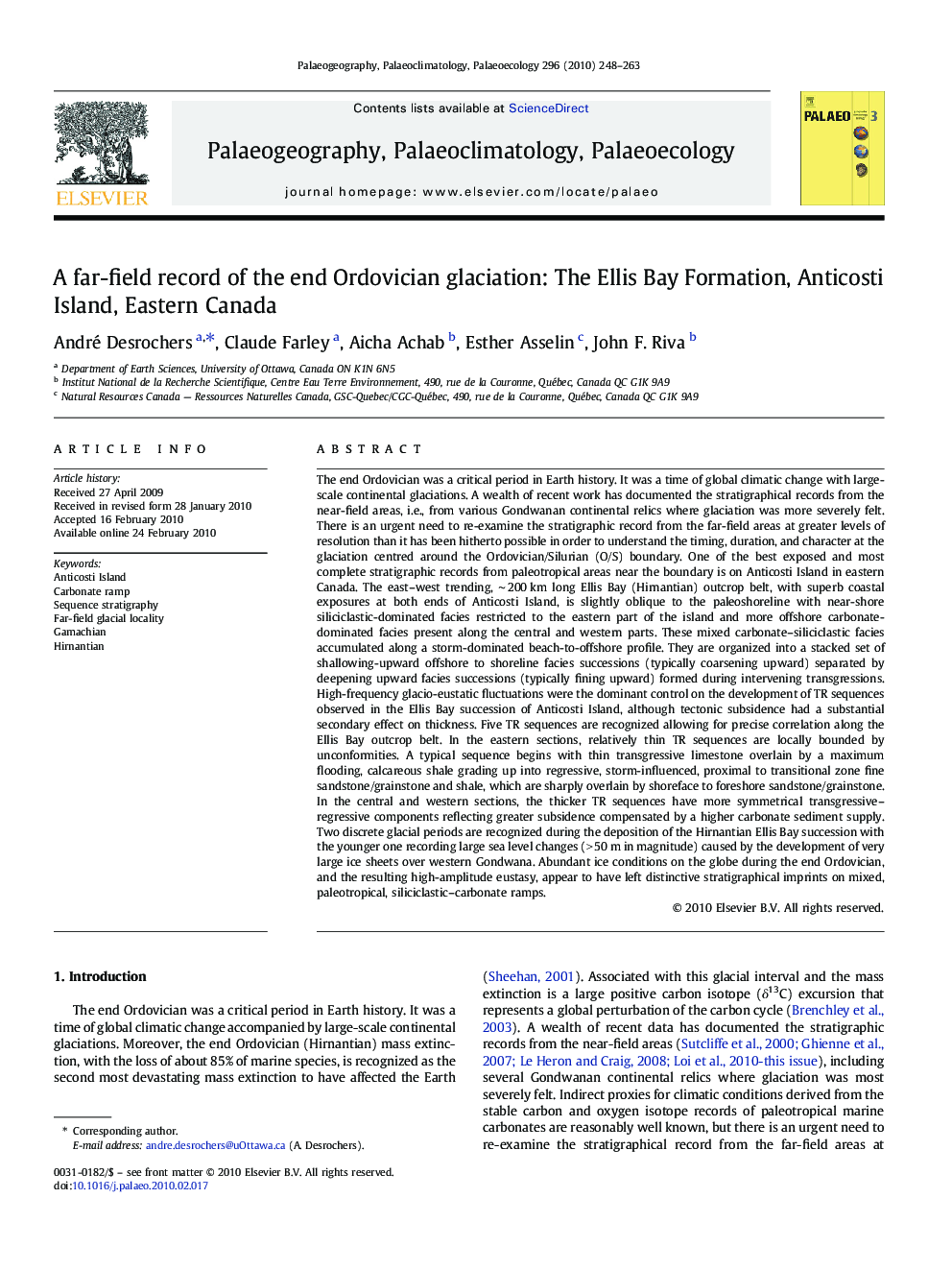| کد مقاله | کد نشریه | سال انتشار | مقاله انگلیسی | نسخه تمام متن |
|---|---|---|---|---|
| 4467592 | 1622269 | 2010 | 16 صفحه PDF | دانلود رایگان |

The end Ordovician was a critical period in Earth history. It was a time of global climatic change with large-scale continental glaciations. A wealth of recent work has documented the stratigraphical records from the near-field areas, i.e., from various Gondwanan continental relics where glaciation was more severely felt. There is an urgent need to re-examine the stratigraphic record from the far-field areas at greater levels of resolution than it has been hitherto possible in order to understand the timing, duration, and character at the glaciation centred around the Ordovician/Silurian (O/S) boundary. One of the best exposed and most complete stratigraphic records from paleotropical areas near the boundary is on Anticosti Island in eastern Canada. The east–west trending, ∼ 200 km long Ellis Bay (Hirnantian) outcrop belt, with superb coastal exposures at both ends of Anticosti Island, is slightly oblique to the paleoshoreline with near-shore siliciclastic-dominated facies restricted to the eastern part of the island and more offshore carbonate-dominated facies present along the central and western parts. These mixed carbonate–siliciclastic facies accumulated along a storm-dominated beach-to-offshore profile. They are organized into a stacked set of shallowing-upward offshore to shoreline facies successions (typically coarsening upward) separated by deepening upward facies successions (typically fining upward) formed during intervening transgressions. High-frequency glacio-eustatic fluctuations were the dominant control on the development of TR sequences observed in the Ellis Bay succession of Anticosti Island, although tectonic subsidence had a substantial secondary effect on thickness. Five TR sequences are recognized allowing for precise correlation along the Ellis Bay outcrop belt. In the eastern sections, relatively thin TR sequences are locally bounded by unconformities. A typical sequence begins with thin transgressive limestone overlain by a maximum flooding, calcareous shale grading up into regressive, storm-influenced, proximal to transitional zone fine sandstone/grainstone and shale, which are sharply overlain by shoreface to foreshore sandstone/grainstone. In the central and western sections, the thicker TR sequences have more symmetrical transgressive–regressive components reflecting greater subsidence compensated by a higher carbonate sediment supply. Two discrete glacial periods are recognized during the deposition of the Hirnantian Ellis Bay succession with the younger one recording large sea level changes (> 50 m in magnitude) caused by the development of very large ice sheets over western Gondwana. Abundant ice conditions on the globe during the end Ordovician, and the resulting high-amplitude eustasy, appear to have left distinctive stratigraphical imprints on mixed, paleotropical, siliciclastic–carbonate ramps.
Journal: Palaeogeography, Palaeoclimatology, Palaeoecology - Volume 296, Issues 3–4, 15 October 2010, Pages 248–263